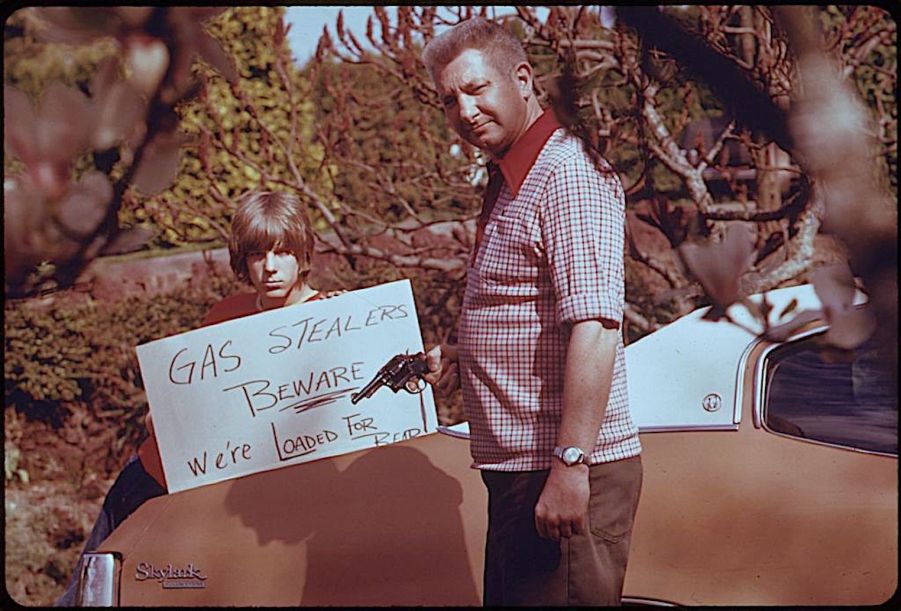
Thieves Are Stealing Thousands of Gallons of Gas: Here’s How They Do It
It’s called “gasoline drive-offs” by the police. When one or a number of gas thieves help themselves to gas or diesel fuel and don’t pay. Until recently, it mostly involved individual occurrences where someone swindles his or her way into a tankful of gas. But lately, bands of thieves are stealing thousands of gallons of fuel at a time. How do they do it without being detected?
How many gas stations are in the U.S.?

There are over 125,000 fueling stations in the US. Less than one-sixth of them are traditional service stations. The vast majority are convenience stores that sell fuel. Shell, Exxon Mobil, and Chevron have the most stations in the U.S. Shell is number one with 12,624 stations, with Exxon Mobil slightly behind at 12,168.
Mostly, gas thieves were able, on occasion, to steal around $50-60 worth of fuel. But as the price of gasoline and diesel fuel have risen in such huge leaps, it is becoming a more desirable commodity. That means there is a vast market for it, regardless of how it was obtained.
In some cases, cashiers or store employees are involved in the theft. But it gets increasingly difficult for thieves to steal anything through a convenience store employee because of security cameras, and time stamps on receipts.
How can gas thieves steal thousands of gallons of fuel?

But, according to Arizona State University, the big fuel thefts, are handled in a much more involved way, like:
- Manipulating the security system on pumps. For example, after prepaying a few dollars’ worth of gas, some offenders have learned how to keep the pump operating beyond the amount paid for.
- Posing as maintenance personnel and tapping a pump’s metering system to release fuel.
- Stealing directly from the underground tanks at service stations: a driver positions a truck with a hole drilled in its floor over the tank, pries off the tank cover, and inserts a pump that can gulp hundreds of gallons. This is highly dangerous because the absence of an effective vapor recovery system means one small spark could ignite an explosion or fire.
- Using a van or other large vehicle to shield a smaller vehicle from the attendants’ view. Several gallons of fuel are siphoned from the gas pump into the smaller vehicle’s tank, the pump meter is reset, and then fueling is completed. The offender then pays for the small amount registered on the meter.
- Working as a pair, one offender distracts the attendant through purchases or conversation, while his or her accomplice at the pump fills the vehicle’s tank and drives away.
Of course, the increases in various types of fuel theft ebb and flows with the economy and inflation. And right now, it’s flowing, just like the fuel itself. Hopefully, with gas prices slightly leveling off, and increased surveillance, the price of gas won’t be affected by those gas thieves who choose to steal it, rather than just paying for it the old-fashioned way.



